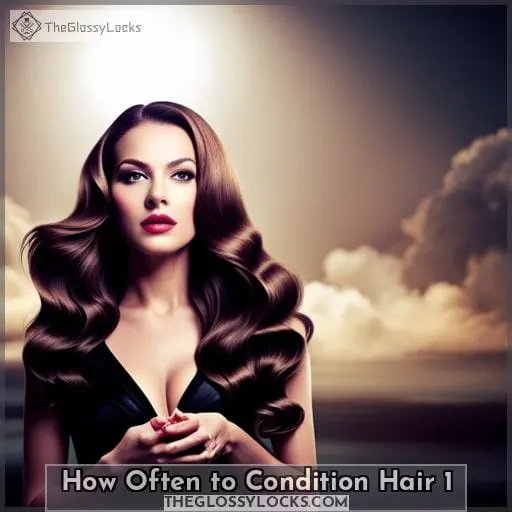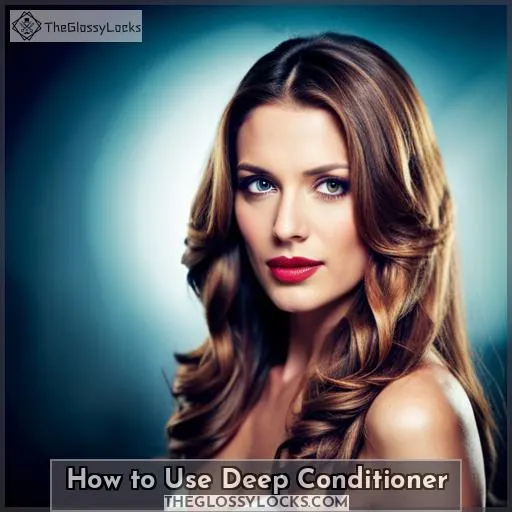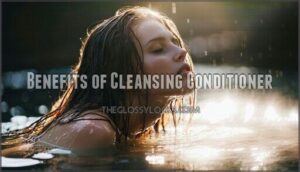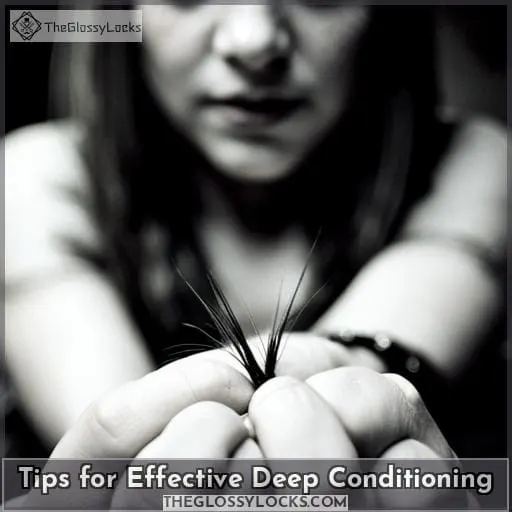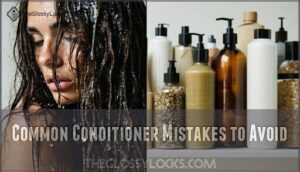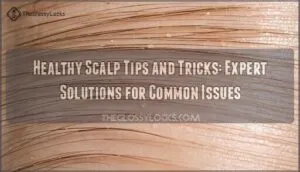This site is supported by our readers. We may earn a commission, at no cost to you, if you purchase through links.
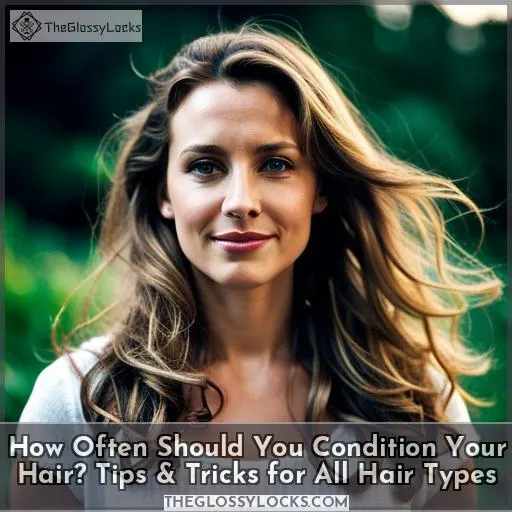 Curious about how often you should be conditioning your hair? It can be tricky to find the right balance – condition too much, and you could end up with greasy locks; not enough, and your hair might become dry or tangled.
Curious about how often you should be conditioning your hair? It can be tricky to find the right balance – condition too much, and you could end up with greasy locks; not enough, and your hair might become dry or tangled.
Take a look at our guide for all the tips & tricks on finding the best way to condition depending on your type of hair.
Whether it’s rinse-out conditioner or deep conditioning treatments like cleansing shampoo – understanding when (and how) to use each product is key in achieving lusciously soft tresses.
Table Of Contents
Key Takeaways
- Frequency of conditioning depends on hair type and needs.
- Rinse-out conditioner should be used a few times per week.
- Co-washing can benefit those with curly hair.
- Foam formulas are great for maximum hydration without weighing down hair.
Frequency of Rinse-out Conditioner
Rinse-out conditioner should be used a few times per week, depending on your hair type and needs, to help make it softer, shinier, and more manageable – without overconditioning. If you have fine or oily hair, then using a light rinse-out formula with protective oils is recommended once every three days.
Co-washing (using conditioner instead of shampoo) can benefit those with curly locks; however, use caution as too much conditioning could lead to greasiness or lack of volume in the hair shaft.
Foam formulas are also great for people who want maximum hydration but don’t want their tresses weighed down by heavy ingredients found in regular creams and balms.
Conditioners need not only be applied when wetting your mane, but leave-in oil treatments can provide moisture between washes if needed. Look for brands like Pantene Gold Series Intense Hydrating Oil specifically made for afro curls, while Smooth & Sleek Dry Oil with Argan Oil works well on frizzy or curly locks.
Repair & Protect Dry Oils containing Vitamin E helps bring back life into overworked, thinning, damaged tresses.
To get maximum benefits out of conditioning, ensure you massage the product all through mid-lengths till tips before rinsing off thoroughly. This will give smoothness as well as protect against breakage resulting due to heat styling techniques such as brushing and drying.
Benefits of Leave-in Conditioner
Leave-in conditioner can help you achieve soft, silky locks that last all day long! With just a few minutes of your time and the right products, you’ll have beautiful hair to show off.
- Use a hydrating oil like Pantene Gold Series Intense Hydrating Oil – perfect for afro curls!
- Try out dry oils such as Pantene Smooth & Sleek Dry Oil with Argan Oil – ideal for frizzy or curly strands.
- Protect colored tresses from fading and nourish them with Pantene 3 Minute Miracle Colour Protect Conditioner.
- Get curl care specifically tailored to your needs using Pantene Gold Series Moisture Boost Conditioner.
- Go light on fine hair by choosing foam formulations like the ones offered in the Pantene range of products. For extra shine when rinsing these formulas off, cold water is recommended!
Ultimately, regular conditioning will give you softer and more manageable manes while keeping breakage at bay due to heat styling techniques such as brushing or drying out strands too much – so make sure not to neglect this step in your routine no matter what texture type or color it may be!.
How to Use Deep Conditioner
Give your locks some TLC with a deep conditioning treatment – perfect for those times when you need to give your mane a major boost! These treatments are designed to restore and replenish moisture, repair heat damage, and add shine.
- Moisturizing oils like Pantene Gold Series Intense Hydrating Oil are ideal for afro curls.
- Dry oils such as Pantene Smooth & Sleek Dry Oil with Argan Oil can help combat frizz or curl care issues.
- For overworked, fine hair types, try out the Repair & Protect formula from Pantene, which includes Vitamin E oil in its ingredients list.
Deep conditioners work better than regular leave-in conditioner because they penetrate beneath the surface of each strand more effectively while also providing additional protection against future damage caused by styling techniques or environmental factors like UV radiation or chlorine from pools and hot tubs.
To use it properly, start by washing the scalp thoroughly before applying an appropriate amount directly onto damp hair (amount depends on length).
With proper application of these treatments once every 1–2 weeks, depending on individual needs, you’ll be able to revive even the dullest strands into beautiful locks that last all day long!.
Benefits of Cleansing Conditioner
Make your mane shine and feel revived with cleansing conditioners – the perfect solution for eliminating the need to use both shampoo and conditioner! The benefits of these products are numerous, from co-washing to dry conditioning.
Not only do they cleanse hair, but they also provide nourishment that helps protect against frizz, color fading, heat damage, and more. Plus, they can even be used as an oil application alternative in between washes, keeping curls moisturized while controlling flyaways.
| Benefits | Applications |
|---|---|
| Co-Washing & Dry Conditioning | Rinse Out & Leave-In Conditioners |
| Color Protection & Frizz Control | Cleansing Conditioner Alternatives |
| Heat Damage Prevention |
Tips for Effective Deep Conditioning
Take your hair care game to the next level with deep conditioning – it can transform dull, lifeless locks into luxuriously soft and shiny tresses in no time! Incorporate a regular routine of moisturizing oils and chemical treatments for optimal results.
Co-washing is an ideal way to cleanse while still maintaining nourishment. Use cleansing conditioners as an alternative if needed. Cold water helps lock in moisture after washing. Foam conditioner serves as a lightweight choice for fine hair types.
Allow the product to sit on strands before rinsing off to ensure full absorption of nutrients from ingredients like argan oil or vitamin E.
After towel drying, apply more oil onto ends or work some leave-in cream through mid-lengths for extra protection against heat styling damage and flyaways that occur throughout the day.
With this simple yet powerful regimen, you’ll be seeing luscious locks all week long!
Common Conditioner Mistakes to Avoid
Avoiding common conditioning mistakes can help you achieve beautiful, healthy hair. The most important factor is the frequency of use. If you use conditioner too often, you risk overconditioning, which can result in greasiness, lack of volume, excessive shine, or difficulty styling with heat.
On the other hand, not using enough conditioner can lead to dryness and breakage.
To avoid underconditioning, it is recommended to use conditioner daily or every other day for dry, coarse, curly hair, as well as for hair that is color treated, especially when using a product like a beard care conditioner
. If your scalp tends to be oily, remember to apply the conditioner only at the ends of your hair.
Co-washing is a great option as it combines cleansing with moisture benefits. This method works particularly well for curly styles, as shampoos can be drying.
For extra protection against heat damage, consider adding oil after towel drying or leaving in a cream that contains nourishing ingredients like argan oil or Vitamin E before blow-drying. Both of these methods will help combat frizz and protect colored locks from fading faster than usual.
By following these recommendations carefully, you will soon enjoy luxurious tresses that stay soft all week long!
Frequently Asked Questions (FAQs)
What types of conditioner are available?
Have you ever wondered what types of conditioners are out there? From rinse-out to leave-in, deep and cleansing – each has its own unique benefits.
Is the frequency of conditioner use different for different hair types?
Yes, the frequency of conditioner use differs for different hair types like a chameleon changes its color. Fine/oily strands generally need less frequent conditioning compared to coarse/curly or dry tresses, which require more moisture replenishment.
What ingredients are usually found in conditioner?
Conditioner typically contains cationic surfactants, emollients, oils, and silicones that work together to make hair soft, shiny, and manageable. These ingredients help replenish moisture as well as protect from heat damage for a powerful boost of liberation you can feel with every use.
What are the benefits of using conditioner?
Conditioning your hair with the right product for you can make a world of difference. It adds shine, softness, and manageability while replenishing moisture to combat heat damage, frizz, and dullness.
How should I apply conditioner for best results?
Apply conditioner generously and evenly throughout the mid-lengths and tips of your hair. Massage from roots to ends, leave it on for a few minutes, and then rinse thoroughly with cold water.
Conclusion
In conclusion, the frequency of conditioning your hair depends on its type, as well as the type of conditioner you’re using.
For instance, if you have fine, oily hair, you should use a rinse-out conditioner a few times a week. On the other hand, if you have dry, coarse, or curly hair, you should use a leave-in conditioner once a week and a deep conditioner every month or two.
Cleansing conditioners can be used daily or every other day for oily or fine hair. However, if you have dry, coarse, curly, or color-treated hair, you should condition it daily or every other day.
By following these tips, you can keep your hair healthy, shiny, and manageable. For example, after using Pantene’s Gold Series Intense Hydrating Oil on her afro curls, Sarah was able to double the number of good hair days she had in a month.

